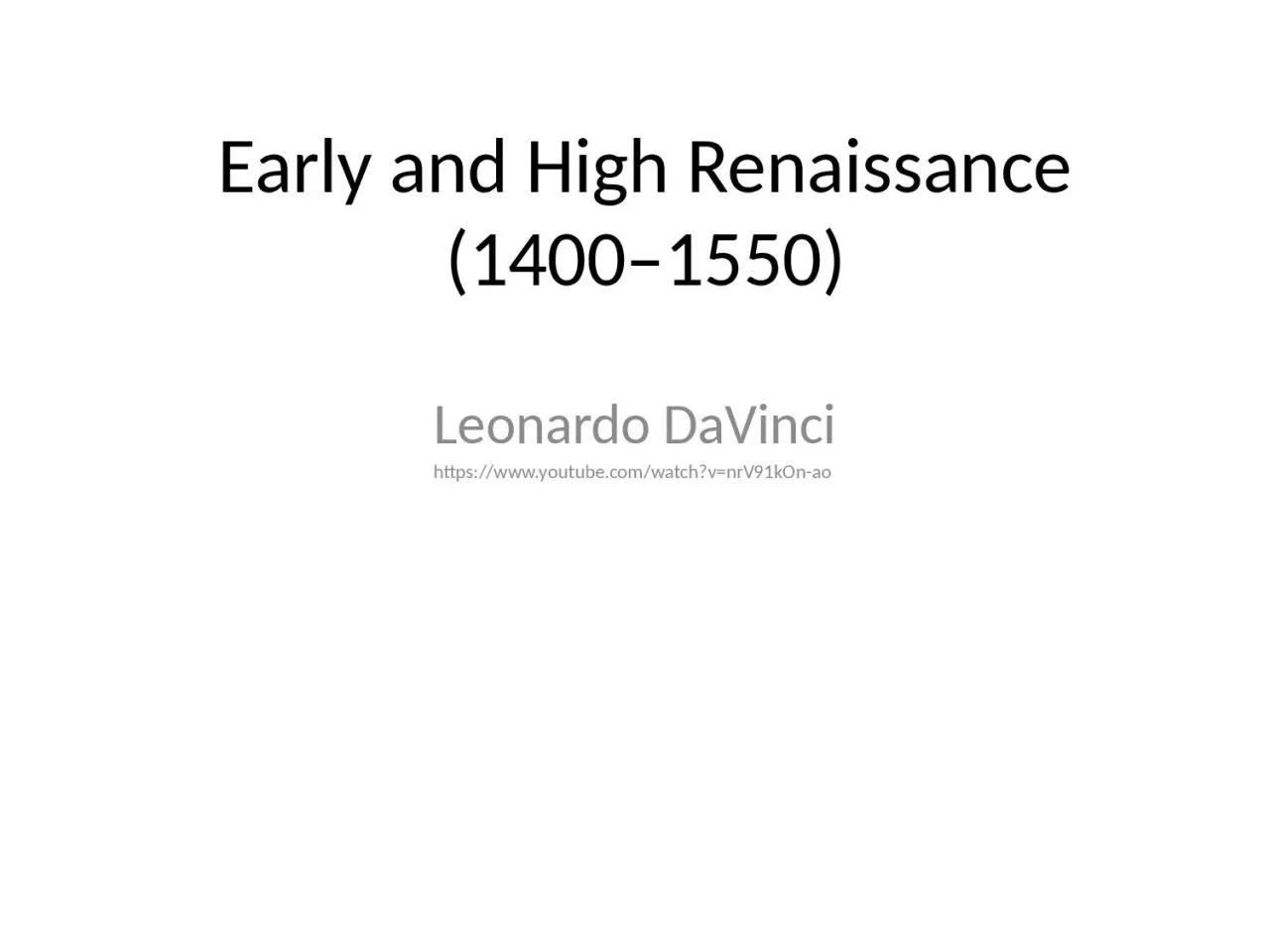

Leonardo DaVinci httpswwwyoutubecomwatchvnrV91kOnao Synopsis Leonardo da Vinci 14521519 was a painter architect inventor and student of all things scientific His natural genius crossed so many disciplines that he epitomized the term Renaissance man Today he remains best ID: 931599
Download Presentation The PPT/PDF document "Early and High Renaissance (1400–1550)" is the property of its rightful owner. Permission is granted to download and print the materials on this web site for personal, non-commercial use only, and to display it on your personal computer provided you do not modify the materials and that you retain all copyright notices contained in the materials. By downloading content from our website, you accept the terms of this agreement.
Slide1
Early and High Renaissance (1400–1550)
Leonardo
DaVinci
https://www.youtube.com/watch?v=nrV91kOn-ao
Slide2Synopsis
Leonardo da Vinci (1452-1519) was a painter, architect, inventor, and student of all things scientific. His natural genius crossed so many disciplines that he epitomized the term “Renaissance man.” Today he remains best known for his art, including two paintings that remain among the world’s most famous and admired, Mona Lisa and The Last Supper. Art, da Vinci believed, was indisputably connected with science and nature. Largely self-educated, he filled dozens of secret notebooks with inventions, observations and theories about pursuits from aeronautics to anatomy. But the rest of the world was just beginning to share knowledge in books made with moveable type, and the concepts expressed in his notebooks were often difficult to interpret. As a result, though he was lauded in his time as a great artist, his contemporaries often did not fully appreciate his genius—the combination of intellect and imagination that allowed him to create, at least on paper, such inventions as the bicycle, the helicopter and an airplane based on the physiology and flying capability of a bat.
Slide3Mona Lisa
Slide4Slide5Slide6Slide7Slide8Slide9